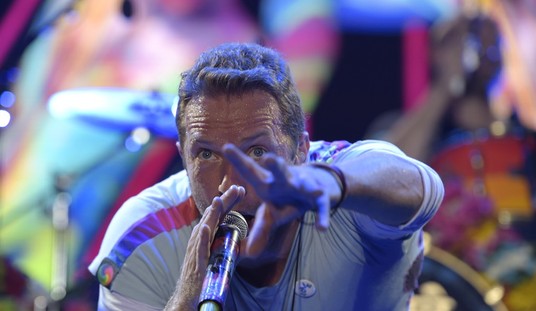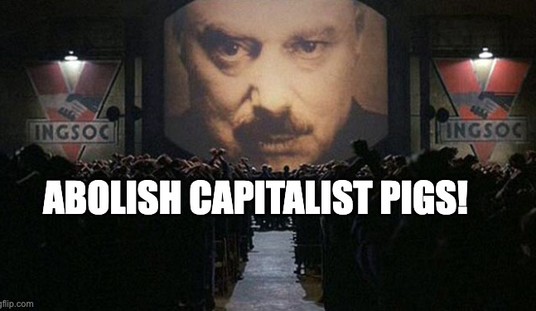The FDA suddenly has an embarrassment of riches on its hands. Their advisory board already has the data from Pfizer on its 95% effective COVID-19 vaccine and should decide by next week whether to grant emergency-use status. That will allow as many as 20 million doses to get distributed within 24 hours of their grant of approval, which is overwhelmingly expected. In fact, the FDA and CDC are already doing dry runs to make distribution as effective as possible.
As expected, Moderna now says it’s ready with a vaccine that’s just as effective and easy to use. By mid-December, it looks like the FDA will have two vaccines to distribute with millions of doses of each, and much more on the way. And the effectiveness of both is basically an epidemiologist’s dream come true:
The company’s actions come after a final analysis of its 30,000-person late-stage trial show the vaccine to have 94.1 percent efficacy, on par with the 94.5 percent reported in a preliminary analysis. The vaccine worked consistently for different ages, races, ethnicities and genders, and the side effects were mild, Moderna said.
New information: The final analysis was based on 196 cases of Covid-19 reported among the study participants. The vast majority — 185 — occurred in people who got a placebo, compared to just 11 among people who got the vaccine.
All 30 severe cases took place in the placebo group, and one participant in the placebo group died of the virus, Moderna said.
The most common side effects included pain at the vaccine injection site, fatigue, muscle and joint pain, headache and redness. The side effects were worse after the second of two doses of the vaccine, which are normally given four weeks apart.
Another exciting component of the Moderna vaccine is its impact on acute cases. Their data suggests that it can curtail the progression of acute COVID-19 cases that manage to sneak through the 5% effectiveness gap:
The new analysis from Moderna evaluated 196 confirmed Covid infections among the late-stage trial’s 30,000 participants. The company said 185 cases of Covid were observed in the placebo group versus 11 cases observed in the group that received its vaccine. That resulted in an estimated vaccine efficacy of 94.1%, the company said.
The company released Nov. 16 an early analysis of its phase three trial based on just 95 Covid-19 cases that showed its vaccine was at least 94% effective. Monday’s data provides a more complete picture of the vaccine’s effectiveness.
It also appears to prevent volunteers from getting severely sick from the virus. Of the 30 severe cases of Covid-19 in the trial, none were in the group that received the vaccine, Moderna said. Additionally, there was one Covid-19 related death in the study that occurred in the placebo group, according to the company. …
“This positive primary analysis confirms the ability of our vaccine to prevent COVID-19 disease with 94.1% efficacy and importantly, the ability to prevent severe COVID-19 disease. We believe that our vaccine will provide a new and powerful tool that may change the course of this pandemic and help prevent severe disease, hospitalizations and death,” Moderna CEO Stephane Bancel said in a statement.
In both cases, the US government bought tens of millions of doses on spec in the hope they would be successful. That allowed Moderna and Pfizer to begin production over the summer, which is why all of these doses are already on hand. Had the administration not implemented Operation Warp Speed, these pharmas would not have had the capital to get development so quickly and to produce their vaccines in massive quantities, ready to be distributed as soon as the FDA approved them. It was a big gamble, and it’s about to pay off big time.
There are others on the way, too, but those might take a while. AstraZeneca appeared ready to launch its emergency-use approval bid, but their data turned out to be more problematic than first thought:
Several scientists have raised doubts about the robustness of results showing the shot was 90% effective in a sub-group of trial participants who, by error initially, received a half dose followed by a full dose.
“All we have to go on is a limited data release,” said Peter Openshaw, a professor of experimental medicine at Imperial College London. “We have to wait for the full data and to see how the regulators view the results,” he said, adding that U.S. and European regulators “might possibly take a different view” from each other. …
At the heart of concerns, however, is that the trial’s most promising result of 90% comes from a sub-group analysis – a technique many scientists say can produce spurious readings.
“Sub-group analyses in randomised controlled trials are always fraught with difficulties,” said Paul Hunter, a professor of medicine at Britain’s University of East Anglia.
He said, in particular, such analyses increase the risk of “type 1 errors” – in other words, where an intervention is considered to be effective when it is not.
AstraZeneca might need to run more trials to fully document its dosing regimen. That will delay it coming to market, and it will increase pressure on Pfizer and Moderna to distribute their vaccines more widely on the global market. That might be difficult to do, especially for Pfizer, whose vaccine requires special refrigeration — which makes it a very poor candidate in areas with lest-robust infrastructure. The price of both vaccines also far exceeds that of AstraZeneca’s estimated price per dose, which makes them even less suitable for poorer countries, even if supplied at cost.
Johnson & Johnson has another vaccine in Phase 3 trials too, but that might be a longer wait. Their Phase 2 trials were promising, but they haven’t gotten enough volunteers for the Phase 3 trials that started at the beginning of November:
J&J plans to give up to 30,000 people two doses of the vaccine. It’s been testing a one-dose regimen in a 60,000-person trial that began in late September and has enrolled nearly 10,000 volunteers so far.
In the new trial, volunteers will get either the vaccine or a dummy shot, then a second dose 57 days later, a company spokesman said Monday. That study is being conducted in the U.S., plus Belgium, Colombia, France, Germany, the Philippines, South Africa, Spain and the UK — locations chosen because they have a high incidence of COVID-19 and can start testing quickly.
The company said it’s being “extremely thorough”’ by testing multiple doses and dosing regimens to evaluate long-term effectiveness.
J&J needs 30,000 in each group — the control (placebo) group and the test group. One has to wonder how many people will be willing to potentially be in a placebo group when other vaccines become readily available, however. J&J better hope to get their trial volunteers soon.








